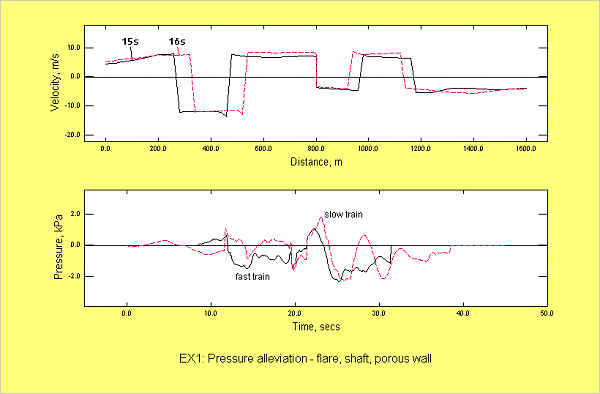Example 1: Pressure Alleviation

A double track tunnel has a flared region at one end, a porous region at the other and a ventilation shaft near its mid point. All three of these features contribute to a reduction in the amplitudes of pressure fluctuations experienced by passengers on trains using the tunnel.
A slow train (150 km/h) begins to enter the tunnel through its right hand portal at the instant t=0s and a faster train (250 km/h) begins to enter through the left hand portal 8.3 seconds later. The two trains cross within the tunnel.
The upper box in the graphical output (below) shows instantaneous velocity distributions along the tunnel at the instants t=15s and t=16s. In this period, the trains are approximately 500 m and 1000 m from the left hand portal.
The graphs in the lower box are pressure histories alongside the fronts of the two trains. It can be seen that the greatest peak-to-peak changes occur on the slower train, not on the faster one. This is usually the case. It has practical implications whenever slow-moving traffic shares tunnels with fast-moving traffic.

